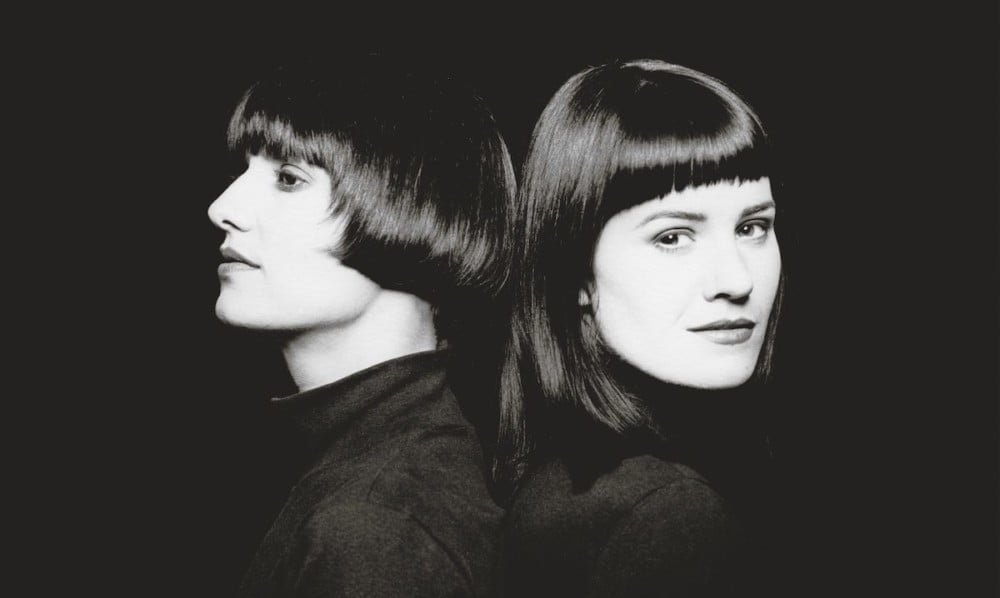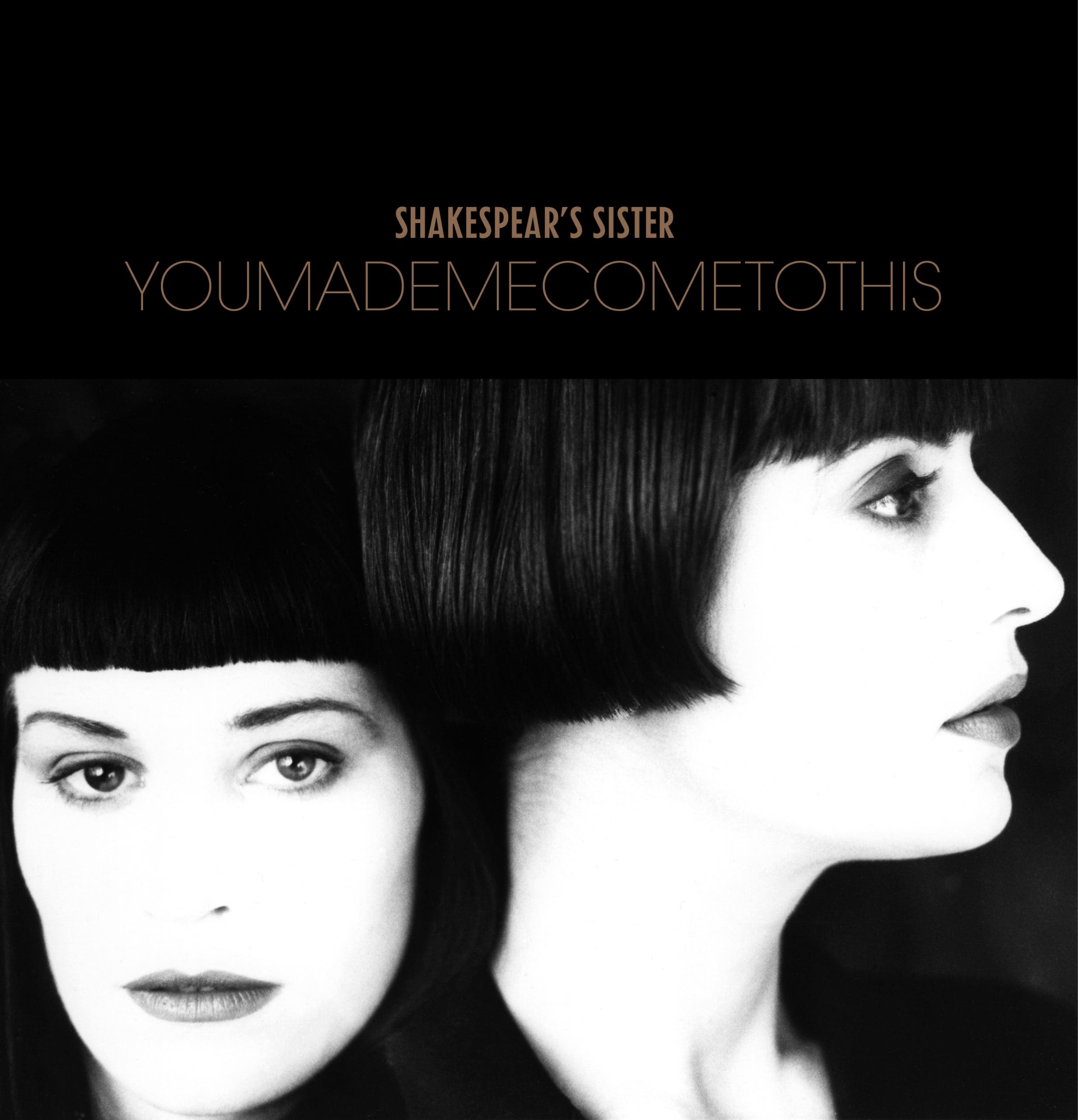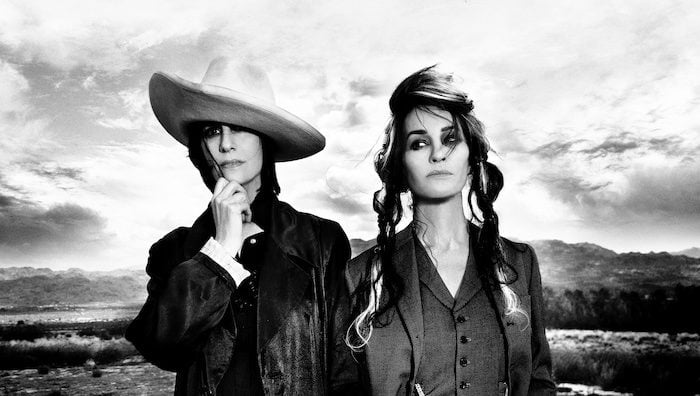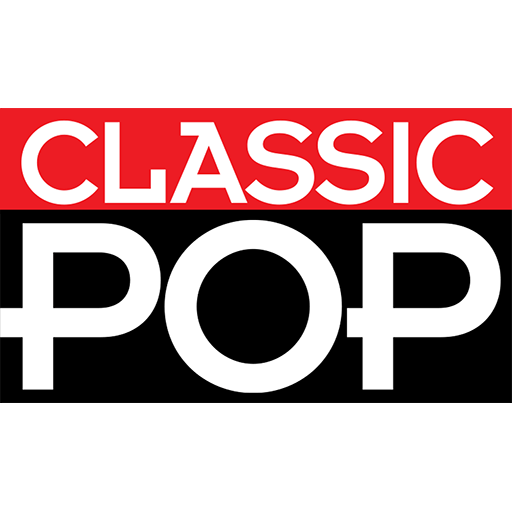
They were the idiosyncratic duo that threw glam rock, goth, B-movie kitsch, electro and art-pop into the blender to form an intoxicating stew. Now, as Shakespears Sister get the deluxe boxset treatment, Siobhan Fahey and Marcella Detroit talk Will Simpson through their genesis story and recent reunion shows…
It feels great that we’re being curated like this. It’s wonderful,” considers Marcella Detroit, one half of Shakespears Sister. The duo – Detroit and Siobhan Fahey – are finally being given the boxset treatment in December when Our History is released. The heart of the package is the two albums they released between 1989 and 1992. But in addition to Sacred Heart and double platinum Hormonally Yours there’s a small mountain of remixes, a lyric book, a photo book, art prints, plus their recent comeback EP and a DVD of a live show they performed last November.
It’s a beautiful artefact, one that does some much-needed justice to a band who’ve been curiously overlooked in the decades since their early 90s peak. In an era dominated by novelty rave, post-Madchester indie and mega-selling movie tie-ins, Shakespears Sister stood out. The territory they staked out back then – intelligent, witty, leftfield, unmistakably feminine pop – was theirs and theirs alone. “I feel we broke new ground,” says Detroit. “There weren’t many other female duos doing the sort of things we were. In fact, there weren’t many female duos full-stop. There still aren’t.”
They were never meant to be a duo though. Initially, Siobhan created the moniker because she was unsure about using her own name as a solo artist. “I remember that I didn’t want to go down that route,” Fahey explains. “I didn’t feel comfortable just going out as me. Plus, I wanted some company. I felt I worked much better in combinations. I wanted to create another band, though that didn’t happen immediately.”
The name was purloined from a song by The Smiths, the mis-spelling deliberate – when the graphic artist who had designed the logo submitted it without the ‘e’, Fahey decided to keep it “because then it made it ours.” Her initial ally in the project was Richard Feldman, a producer/writer who had worked with Eric Clapton and just happened to live across the road from her.
“I’d just moved to Los Angeles, recently had a baby and had left Bananarama. But I still wanted to create urgently. And Richard introduced himself as our neighbour. We got talking and it turned out that he had a really cool demo studio in his garage with the same deck that they recorded My Way on. It was a very good vibe, a very creative place. I would go over there every day and write with him.”
It was Feldman who suggested bringing Marcella on board. “We already had an electro pop style going on and Richard said, ‘I know this girl that I work with and I think her voice would work really well with yours. I’d love to invite her down’. Great! Why not?”
The first track they worked on was Break My Heart, which would be released as their debut single, a year ahead of the album. It saw Siobhan consciously adopt a new vocal style. “It was a very deliberate choice to sing at the really low end of my range. I wanted to sound unpretty. I definitely wanted to sound very different from how I did in Bananarama.”
“I remember they [Siobhan and Feldman] had this idea they had come up with,” remembers Detroit. “There wasn’t much to it but I remember the backing track sounding really edgy, really progressive. I recall going over to the studio and he asked me whether I wanted to sing and maybe play some stuff on it. So I started with some backing vocals.”
Marcella’s soprano provided a striking counterpoint to Fahey’s new deeper voice, a combination that would soon become the band’s calling card. “It was pretty immediate,” remembers Fahey. “As soon as she put the vocals down for Break My Heart it was obvious that we complemented each other really well.”
Sacred Heart took shape over the course of the next year in studios on both sides of the Atlantic. Several of the tracks, such as the stomping Primitive Love showcased Siobhan’s love of what was in the late 80s a defiantly unfashionable influence: glam rock.
“Ha, it’s never been out of fashion for me! People like Marc Bolan were a major influence in my youth. That was a deliberate harking back. There’s always been a glam element to whatever we’ve done.”
In amongst the glam and electro pop there was also room for a slinky cover of Bob Marley’s disco crossover hit Could You Be Loved. “Richard is a big reggae fan,” explains Marcella. “He’s worked with lots of major reggae artists like Toots And The Maytals and Peter Tosh. I don’t know if he suggested it, but Siobhan was a big fan of it and I thought it was a really cool song. I think we made it our own.”
But despite this, the record company hadn’t yet heard a hit. So after sessions in Los Angeles and London, the duo were dispatched to New York ‘for inspiration’. Marcella: “Dave [Stewart, Siobhan’s now ex-husband] was there working on his album and we went along with Richard and were writing up until the eleventh hour. We were in this hotel room, writing away. And suddenly we came up with You’re History, we were all like, ‘YES!’ It was the result that we needed. Siobhan came up with the title and the whole thing flowed from there.”
“It was one of those songs that just pops out really quick,” Siobhan reflects. “The lyrics came very quickly, too. It was obvious it was the hit that London [Records] were looking for. It had a much lighter dance feel than a lot of the other tracks. It sounded really playful.”
You’re History did the requisite commercial business, reaching the Top 10 in August 1989 and Sacred Heart followed it a month later, going gold in the UK and cementing the band in the public consciousness. By now Detroit was officially a member. “I was going over there to England and they suggested it – ‘you guys should be a duo because you work really well together’. After You’re History became a hit it gave me more of a place within Shakespears Sister and gave us more of an identifiable sound. We went over to do a load of promo for the album and by the time we were ready to start the new album it had just become a reality.”
Detroit’s fondest memories are of around this time when the two women were writing the songs that would eventually be released as 1992’s Hormonally Yours. “Siobhan would come over to my house every day.
At 1pm we’d start working. We’d have a little eight-track studio and would just start writing, writing, writing. After several days we’d take everything we’d been working on over to her place. Dave was there, [producer] Chris Thomas was there – they were both working on the Spiritual Cowboys album. We’d play what we’d been working on and people were like, ‘Ah, this is really good! It’s so different!’ I think that to me is when it was really working well.”
From the start they both had a definite idea of the sound they wanted for the album. “We agreed we had to get away from the 80s electro sound and go for something more organic,” remembers Siobhan. So there were more guitars on it. I don’t think Hormonally Yours has dated at all, whereas Sacred Heart will always be much more of an ‘80s record’ because of all the synths.”
Many of the songs were inspired by a B-movie the duo had become enamoured with around this time. “Cat-Women Of The Moon!” recalls Marcella. “Really cheesy American 50s sci-fi. Terrible effects. Dave [Stewart] introduced me to it. We watched it and loved it and wanted to try to buy the rights to the movie and superimpose ourselves on top of it for the videos. But London Records wouldn’t allow it. So instead we just used it as inspiration – almost every song on the album is written about a scene from it.”
One that wasn’t was the lead single Goodbye Cruel World. “That was also inspired by the movies, but classic Hollywood films like Sunset Boulevard and Whatever Happened To Baby Jane?. Siobhan came up with the lyric. I think some of it was her angst that she was having with the label at the time. The chorus goes ‘Bye Bye Mister A’ and that was the head of the label at the time, who was, you know, actually always very supportive. But, you know, as artists we sometimes take it upon ourselves to use our music to tell people how we’re feeling!”
Another highlight was Are We In Love Yet, which was built up from an early 70s funk guitar lick. “We were trying to channel Sly And The Family Stone,” says Marcella. “That was kind of our tribute to them and that whole era.” Then there was the acoustic-led Moonchild, another Catwomen-inspired song (“That one was about being an outcast in society”) and The Trouble With Andre (“he’s a liar”) with its rich echo-y guitar, supposedly written about a friend of Siobhan’s.
The most immediate track on the album was I Don’t Care, which was the duo’s take on The Cure’s oeuvre of slinky alt-pop. Siobhan: “it was inspired by tracks of theirs like The Love Cats. The verse and chorus both came very quickly but then we were stuck for a middle eight. In the studio I picked up this book of poetry which just happened to be lying around. I saw the words to this poem [Edith Sitwell’s Hornpipe] and just started rapping them. And it fitted just perfectly. Everyone just said, ‘Yes, that’s brilliant!’ It was – what do you call it? – kismet.”
For production, the pair turned to Alan Moulder, then best known for his work with shoegazing doyens Ride and My Bloody Valentine. “He was a good friend,” says Siobhan. “I wanted to work with someone who would be sonically great but who’d be supportive of my ideas. I also loved that he loved to experiment. He’d move microphones into all sorts of different places, down toilet bowls, you name it.”
“He was a great fit,” confirms Marcella. “He was fantastic at creating rock’n’roll sounds, and great at guitar sounds. He’d have all these off-the-wall ideas that somehow worked, like mic-ing up tiny amps and making them sound huge.”
The centrepiece, of course, was Stay, which was specifically written as a feature for Detroit. “Dave and Siobhan used to have these parties where you’d see Timothy Leary and Roy Orbison, Bob Dylan and George Harrison would be walking around. At one point, there would always be a jam and I’d sing a song, I Will, by The Beatles.
“So one Sunday morning around 9.30am my husband said, ‘Wake up, Dave and Siobhan are here and they want to talk to you.’ I got some coffee and went into the studio to meet them. And they went, ‘Hey Marcy, you know how you always sing that song? I think we should write a song for you for the album, a real beautiful ballad where you can use your voice.’ ‘OK great!’
So she came up with the idea. He had started singing, ‘If this world is wearing thin’ [first verse]. When it came to the chorus he stopped and I don’t know where this came from but I started singing, ‘Stay with meee’. It just happened like that.”
The single revived their commercial fortunes in the UK – they’d hadn’t had a hit since You’re History – and reached No.1 in February 1992, remaining there for two months. “After a while it actually started to feel really bizarre,” remembers Siobhan. “Week after week it seemed to hang on at No.1 and we’d be on Top Of The Pops again. Things like that don’t often happen and when they do you don’t want to take it for granted because they’re so rare.”
Stay’s success was massively helped by the video and indeed the whole look of the Hormonally Yours campaign, which was created by Sophie Muller. “For a while, she was almost like a third member of the band,” recalls Marcella. “We would get together and talk about what we wanted and what inspired the songs – Sophie used Siobhan and I’s relationship as the inspiration for the videos.” Memorably, in Stay Siobhan appears as a sequin-encrusted angel of death tussling with Marcella for the life of her beloved. In I Don’t Care the pair are brandishing knives and slipping poison to one another over dinner.
Hormonally Yours sold 600,000 copies in the UK alone, staying, ahem, on the album charts for a year. But even as they enjoyed the success they had been working towards for years, the pair’s relationship was hitting the rocks. At what should have been a moment of collective triumph, the 1993 Ivor Novellos – where Hormonally Yours picked up Best Contemporary Collection of Songs – it was announced that Detroit had departed. Fahey continued alone, releasing two more albums in 2004 and 2009, but she didn’t speak with Detroit until 2018 when the plan for their current reunion was put into action.
While the boxset omits those Siobhan-only albums it does bring the Shakespears Sister story up to date in that it includes the EP the pair released last year and a DVD of their Brighton Dome show from their November 2019 Rides Again tour.
“I think it went well,” suggests Marcella of that recent jaunt. “Everybody got along with other. There were great musicians – we had Marco Pirroni on guitar and Claire, who was in the original band in the 90s, on bass. We travelled on the bus. It wasn’t like really roughing it but there was no luxury. Although we never really did luxury even back then!”
However, any future plans for the band have seemingly been kiboshed by Covid. “I don’t know,” is the only thing Marcella can say regarding new Shakespears Sister activity. “My husband and I saw Siobhan the night before lockdown started here [in LA] on 13 March. We talked about possibly doing some shows, some live streams, but because we can’t even be in the room together, I don’t know. None of us feel comfortable doing anything without this thing being under control. As far as any new writing goes, we’ll see how it goes.”
For the moment there is the boxset and the knowledge that at last the body of work they created together is being given the due respect it deserves.
“Many, many people have said they were inspired by us and have sent us emails saying how much they loved what we did. It feels good that we’re being acknowledged as the really good band we were.
“We didn’t look like anyone else and we didn’t sound like anyone else. We were individual and I think that’s why the music still stands up today.”
Classic Pop may earn commission from the links on this page, but we only feature products we think you will enjoy.




